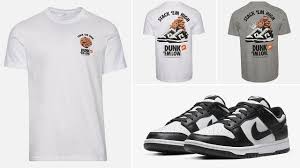Why Winter Clothing Matters
As temperatures drop and days get shorter, choosing the right winter clothes becomes essential for comfort, health, and style. Whether you’re navigating a snowy city, planning a mountain trip, or just braving cold mornings on the way to work, the right winter wear protects you from cold, wind, moisture, and frostbite.
But winter clothing isn’t just about piling on layers. It’s about smart layering, choosing the right materials, and matching function with fashion. From base layers to outerwear, gloves to boots, every piece plays a role in keeping you warm without overheating.
In this guide, we’ll break down the must-have items, fabrics to look for, and how to dress smart for any cold-weather situation.
The Three-Layer System Explained
One of the most effective ways to dress for winter is using the three-layer system: base, mid, and outer layers. Each serves a specific purpose in managing warmth, moisture, and weather protection.
1. Base Layer: Moisture Management
This is the layer that sits closest to your skin. It should:
- Wick away sweat
- Keep you dry and comfortable
- Prevent chills from damp fabric
Best materials:
- Merino wool (warm and odor-resistant)
- Synthetic fabrics like polyester (fast-drying)
Avoid:
- Cotton, which holds moisture and can make you colder
2. Mid Layer: Insulation
This layer traps body heat to keep you warm. It can be worn alone on mild days or under an outer shell.
Popular options:
- Fleece jackets
- Down or synthetic puffer vests
- Wool sweaters
3. Outer Layer: Weather Protection
This layer shields you from wind, snow, and rain. It should be:
- Waterproof or water-resistant
- Windproof
- Breathable, to let moisture escape
Examples:
- Hardshell jackets (for snow or heavy rain)
- Parkas (insulated and weatherproof)
- Trench coats with insulated liners
For more detailed outdoor wear layering tips, check REI’s Layering Guide
Must-Have Winter Clothing Items
Here’s a breakdown of the essential winter clothes every cold-weather wardrobe should include:
1. Winter Jacket or Coat
This is your primary defense against the elements. Choose based on climate:
- Puffer jackets: Lightweight, highly insulated
- Wool coats: Stylish and warm for urban settings
- Parkas: Best for extreme cold and snow
Features to look for:
- Insulated lining (down or synthetic)
- Adjustable hoods and cuffs
- Wind flaps and waterproof zippers
2. Thermal Base Layers
Worn under your clothes, thermal tops and bottoms are key for insulation.
- Look for merino wool or synthetic thermals
- Avoid cotton thermals unless in dry conditions
- Choose snug but not tight fits
3. Sweaters and Fleece
These make excellent mid-layers or can be outerwear on mild winter days.
- Wool keeps you warm even when damp
- Fleece is soft, lightweight, and quick-drying
- Turtlenecks add warmth and style
4. Winter Pants
Regular jeans and leggings aren’t ideal for freezing temperatures. Consider:
- Fleece-lined jeans or leggings
- Wool trousers for formal wear
- Waterproof snow pants for outdoor activities
You can also layer thermal leggings under regular pants for extra warmth.
5. Hats and Beanies
Up to 30% of body heat is lost through the head, so a good hat is essential.
- Wool beanies: Classic and warm
- Fleece-lined hats: Extra insulation
- Earflap hats: Great for wind protection
6. Scarves and Neck Gaiters
Don’t overlook the neck area. Wrap up with:
- Wool or cashmere scarves for style
- Fleece gaiters or balaclavas for sporty use
7. Gloves and Mittens
Frozen fingers can ruin any outing. Choose gloves based on activity:
- Insulated waterproof gloves for snow
- Leather gloves with wool lining for urban wear
- Mittens are warmer than gloves but reduce dexterity
Tip: Use liner gloves underneath mittens for added warmth and touchscreen access.
8. Winter Boots
Your feet are at constant risk in cold weather. Good winter boots should be:
- Waterproof
- Insulated (200g to 400g insulation)
- Grippy soles for snow and ice
Popular materials:
- Leather or synthetic uppers
- Rubber soles
- Thinsulate or shearling insulation
Pair boots with wool socks for maximum warmth.
Best Fabrics for Winter Wear
Material choice can make or break your winter outfit. Here are the best fabrics to look for:
| Fabric | Benefit |
|---|---|
| Wool | Natural, warm, moisture-wicking |
| Down | Lightweight and highly insulating |
| Fleece | Soft, fast-drying, great for layering |
| Gore-Tex | Waterproof and breathable (great for outerwear) |
| Synthetic Insulation | Warms even when wet, more affordable than down |
Avoid:
- Cotton, as it absorbs moisture and dries slowly
- Cheap acrylic, which lacks warmth and durability
Winter Fashion Tips
Cold weather doesn’t mean sacrificing style. Here’s how to stay warm and look good:
- Layer with intention: Show sweater cuffs or scarf texture under a coat
- Stick to a color palette: Neutrals like black, grey, camel, and navy are timeless
- Accessorize smart: Choose gloves, hats, and boots that complement your outerwear
- Tailored coats elevate any outfit
- Use contrast: Match a bold scarf with a simple jacket
Want more winter style inspiration? Browse collections from Uniqlo’s HeatTech Collection or Patagonia for function-meets-fashion outerwear.
Packing Winter Clothes for Travel
If you’re heading to a cold destination, packing smart is essential:
- Choose versatile layers that can be mixed and matched
- Pack compression bags for bulky items like jackets
- Wear your heaviest coat and boots during transit
- Stick to 2–3 base layers, 1–2 mid layers, and 1 outer layer
Don’t forget accessories—cold hands and ears ruin trips fast!
Caring for Winter Clothing
To keep your winter gear in top shape:
- Read labels before washing (especially for wool and down)
- Store coats on sturdy hangers in a dry place
- Air out boots and gloves after use to avoid odor and mold
- Wash base layers regularly to prevent buildup
- Use wool detergent for wool garments
Proper care extends the life of your winter investment pieces.
Final Thoughts: Stay Warm, Stay Stylish
Choosing the right winter clothes isn’t just about avoiding frostbite—it’s about feeling comfortable, confident, and prepared for whatever the cold brings. With smart layering, quality materials, and a few stylish pieces, you can conquer winter without sacrificing warmth or fashion.
Whether you’re bundling up for snowstorms, chilly city mornings, or mountain adventures, make your winter wardrobe work for you—and don’t underestimate the power of a good pair of socks.












